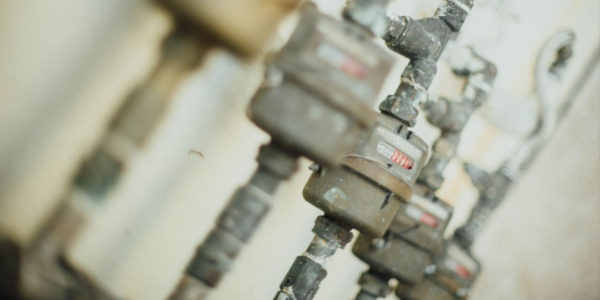No materials last forever. The laws of thermodynamics dictate that once we put work into making something like a pipe, its highly ordered structure can only deteriorate. Whether from corrosion, wear, abrasion, fatigue, or thermal stress, pipes lose their integrity and eventually fail.
Pipe erosion occurs when pipe wall material thins out and weakens over time. Here are five factors that contribute to pipe erosion:
Heat or Cold
Most metals expand when heated and contract when cooled. Even when a temperature change is not severe enough to compromise the structural integrity of a pipe, a small temperature change, particularly when it is coupled with physical stresses like the pressure of the fluid flowing in the pipe, can create enormous stresses in the pipe walls. These stresses can cause a phenomenon known as creep. Creep is the slow and gradual deformation of a material as the result of thermal stresses combined with physical stresses.
Heat or cold, or a cycle of heating and cooling, can introduce thermal stresses into a pipe. These thermal stresses can cause deformation or even micro-cracks in the pipe walls, eventually leading to pipe failure.
Contact with Other Materials
Another common cause of eroding pipes is contact with other materials. For example, pipes often sit in pipe saddles which are intended to support the weight of the pipe and the fluid flowing through it. However, resting in the pipe saddle creates the conditions for wear and abrasion of the pipe. Wear and abrasion occur when materials rub against one another, causing a gradual removal of the material. The difference between wear and abrasion is that wear occurs at the interface of two materials (for example, a pipe and pipe saddle) while abrasion occurs when grit sits between two materials (for example, sand between a pipe and pipe saddle). The gradual removal of material due to wear or abrasion is a classic cause of pipe erosion.
Fortunately, pipe wear pads can reduce pipe erosion due to wear and abrasion. In the case of wear, the pipe pads wear preferentially over the pipe material, thereby saving the pipe from pipe erosion. The pipe pads also provide a cushion for the pipe thereby reducing abrasion.
Moisture
Galvanic corrosion occurs when an anode and a cathode are separated by an electrolyte. Suffice it to say that a pipe and a pipe saddle separated by a few drops of water create exactly the conditions for galvanic corrosion.
Galvanic corrosion is the corrosion we are all familiar with. Any iron in the pipe material converts to iron oxide (or rust) and weakens substantially. This loss of strength can lead to pipe failure. In fact, it is estimated that the U.S. economy suffers more than $9 billion in losses due to pipeline corrosion every year.
Again, pipe pads were designed for exactly this form of pipe erosion in mind. Pipe pads do not conduct electricity, therefore they cannot form an electrode for purposes of galvanic corrosion. In other words, pipe pads reduce the risk of galvanic corrosion and, thus, pipe erosion due to corrosion.
Microbes
Another form of corrosion arises from microbes. Microbes can corrode metal in two primary ways. First, microbes may attack the pipe material directly, eating away at the pipe material and causing pipe erosion. Second, microbes may secrete chemicals that eat away at the pipe material.
In either case, pipe pads may provide a substantial block against microbial corrosion. Pipe pads take up space between a pipe and pipe saddle, thereby creating an environment lacking the moisture needed for microbes to grow. If microbes lack the water needed to live and secrete waste products, the likelihood of microbial corrosion is substantially reduced.
Vibration
Pipes and pipelines connected to pumps or other machinery will almost inevitably experience some vibration and other cyclical mechanical stresses. These vibrations can create micro-cracks in the pipe material that propagate into large cracks, eventually leading to pipe failure in a process called fatigue.
Fatigue can be reduced by the use of pipe pads, which can dampen vibrations by supporting the pipe in the pipe saddle. Less vibration means less mechanical stress and, consequently, less crack formation and propagation.
Pipe erosion’s causes, such as vibration, microbes, moisture, temperature changes, and contact with other materials, can be substantially reduced with pipe pads.



Leave a Reply